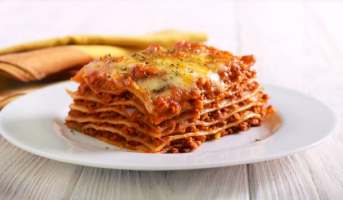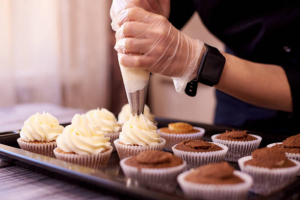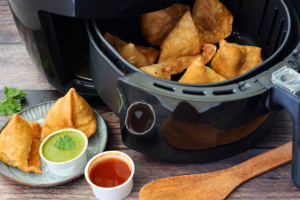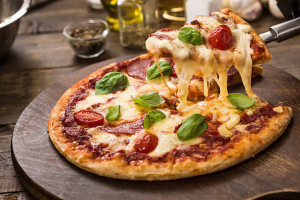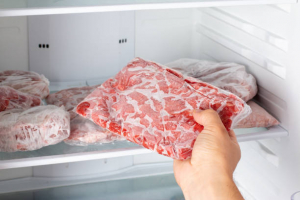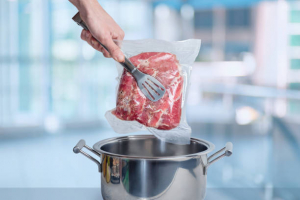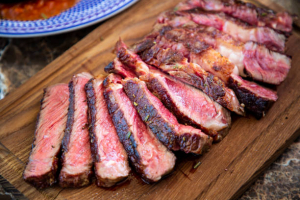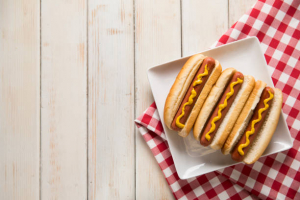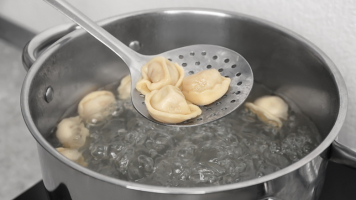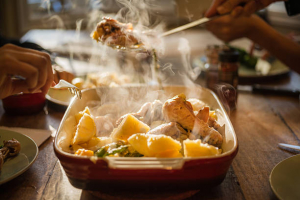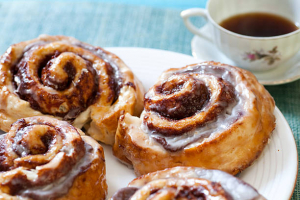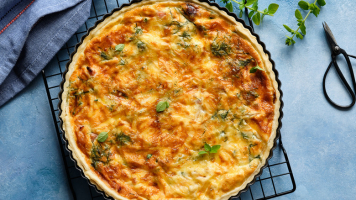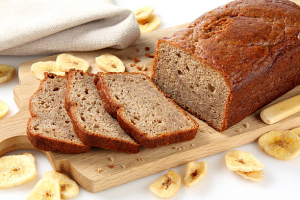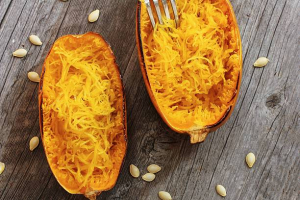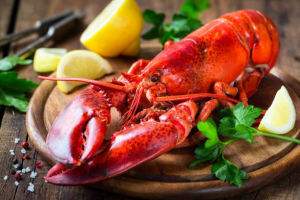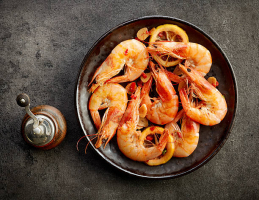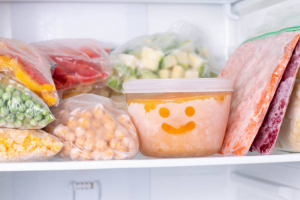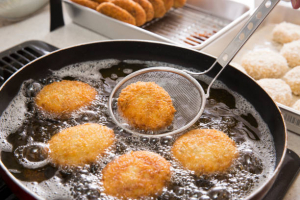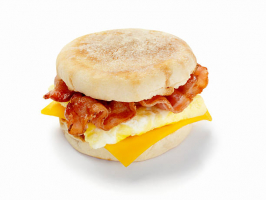Top 10 Biggest Mistakes Everyone Makes While Baking Focaccia
Focaccia is a flavorful yet simple bread that any home baker can make. The term "focaccia" is derived from the Latin "panis focus", which means "hearth bread". ... read more...If you're still trying to perfect the basic focaccia recipe, Toplist has got you covered with everything you need to know when getting started with this type of bread. Here are some of the most common mistakes people make when making focaccia bread, as well as suggestions for improving your next baking experience.
-
All-purpose flour should undoubtedly be a kitchen staple. Is it, however, always the best option for baking focaccia? According to the Guardian, the type of flour you use can affect the flavor and texture of the bread. One component of good focaccia bread is strong, glutenous bread flour. Substituting some (but not all) of the all-purpose flour in your recipe for bread flour will result in a more elastic and stretchy texture. This is due to the fact that bread flour contains slightly more protein (12-15%) than all-purpose flour (8-12%), resulting in more gluten.
To make focaccia, the Guardian suggests combining equal parts bread flour and 00 flour. Fine Dining Lovers notes that 00 (double zero) flour is the finest ground flour available, and the dough contains gluten levels comparable to bread flour. Bread flour, on the other hand, is made from red wheat, which has a more elastic and chewy structure than durum wheat.
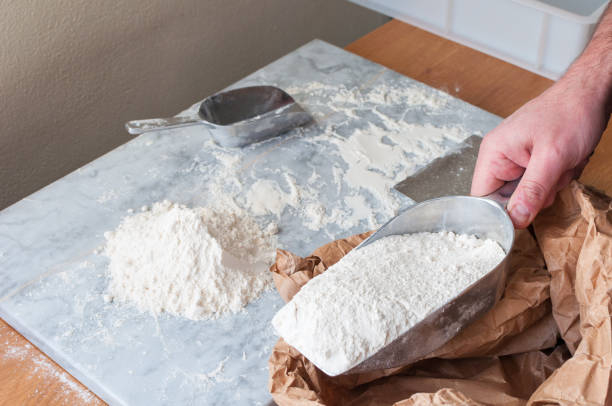
Only using standard all-purpose flour 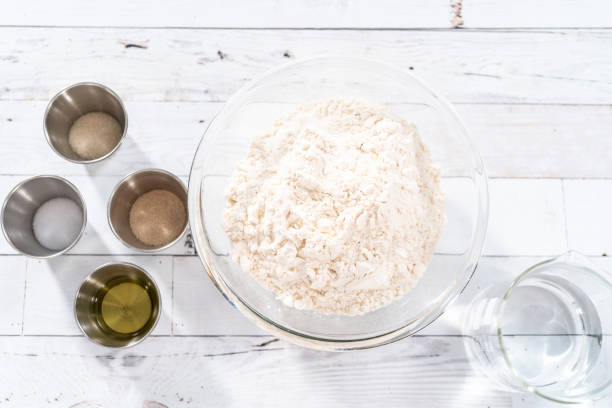
Only using standard all-purpose flour -
One common misconception about focaccia is that it is made with a low-hydration dough. If you're making focaccia in a stand mixer, you might be surprised by how wet the dough is, and reach for your flour canister to remedy the situation. To maintain its structure and produce the chewy, delicious texture that the bread is known for, focaccia requires a lot of water; use about 112 cups of water to four cups of flour.
Because of its high hydration, Phil's Home Kitchen suggests working the dough differently than other types of bread dough. You can either place the dough in a stand mixer fitted with a dough hook attachment for 15 minutes or turn and flop the dough on itself for up to ten minutes. The dough may not come together as quickly as other types of dough, but allowing the gluten to develop and proof overnight results in great focaccia and less stress for the baker. In a nutshell, trust the process!
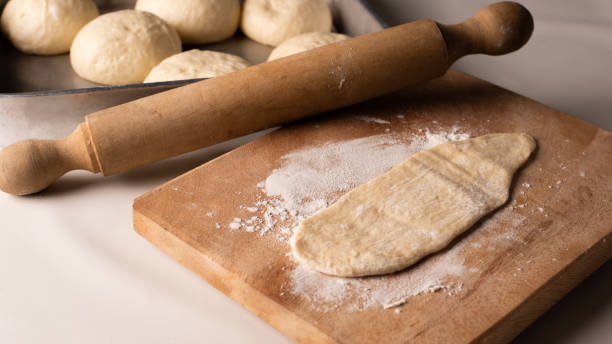
Keeping the dough too dry 
Keeping the dough too dry -
Salt is a necessary component of all bread doughs. There are several reasons why you should add salt to the dough, according to the Weekend Bakery. The first is that salt enhances the flavors of other ingredients; this is especially true for focaccia flavored with herbs, olives, and other vegetables. The chemical structure of the salt also aids in the formation of strong gluten structures in the bread, resulting in a more elastic, chewy dough. When the bread is proofing, the salt will hold the carbon dioxide in the dough rather than allowing it to escape into the atmosphere, resulting in a soft and fluffy dough rather than a crisp cracker.
When adding salt to your focaccia dough, the only precaution you should take is not to leave the salt directly on top of the yeast for extended periods of time (as the salt will kill the yeast). If you mix the dough right away, you can be confident that the yeast and salt will coexist and collaborate to help you achieve a good bake.
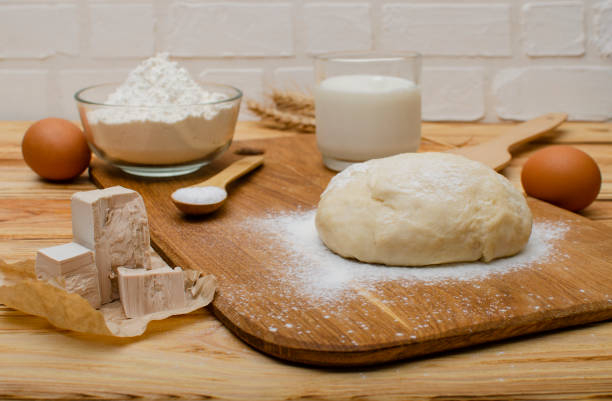
Forgetting to add salt to the dough 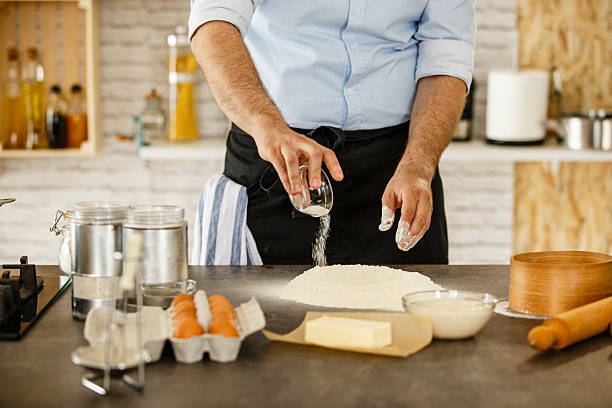
Forgetting to add salt to the dough -
There are numerous types of yeast used in bread production. Cake yeast, rather than powder, is sold in wet bricks and is used in commercial applications. A baker will cut the blocks and dissolve the yeast in the water to prepare them. Cake yeast is not suitable for focaccia because it is typically used for baked goods with a much longer rise time, such as brioche. Dehydrated cake yeast is what active dry yeast (ADY) is. Similar to cake yeast, you would need to dissolve the ADY powder in water and proof the yeast with sugar. Although this appears to be a laborious step, it ensures that the yeast is active and ready to feed on the carbohydrates in the dough.
Instant yeast is the best choice for yeast that produces results quickly. This product is labeled "bread-machine yeast" or "rapid-rise yeast" in the baking section of your grocery store. Instant yeast is ideal for focaccia because it is finer than ADY, does not need to be proofed before adding to the dough, and works quickly in a variety of bread products. Simply combine the yeast with the flour and continue to work.
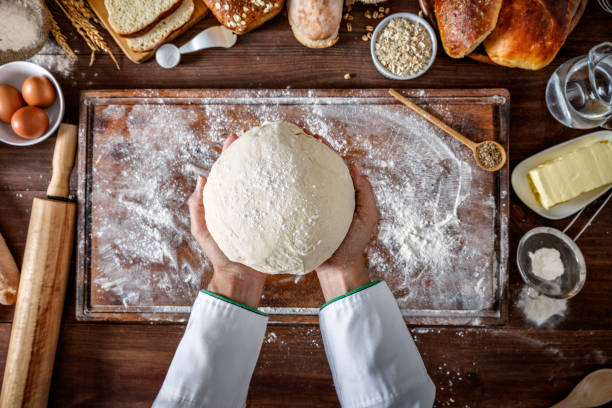
Using the wrong kind of yeast 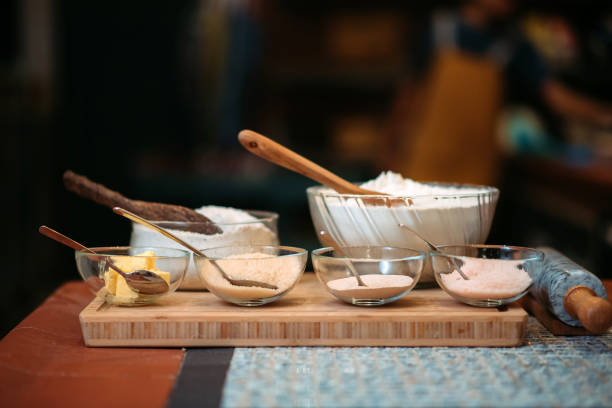
Using the wrong kind of yeast -
Fermentation develops flavor, so it is reasonable to expect that dough with a longer fermentation window will be more flavorful than dough that has been rushed through the proofing and fermentation process. You should make a poolish starter for more flavorful focaccia. A poolish starter, as opposed to a levain made from wild yeast, is made from commercial yeast that has been allowed to pre-ferment for 12-24 hours before being mixed in with the rest of the bread ingredients. You won't get the same strong, acidic flavor as a levanin, and you won't have to go through the arduous process of keeping your sourdough alive and fed until you use it.
According to The Weekend Bakery, a poolish starter can be made simply by combining equal parts flour and water (resulting in 100% hydration). The amount of instant yeast you'll use depends on how much time you have to allow the dough to pre-ferment; for a culture that will be used in eight hours, you'll use more yeast than one that will take a day to pre-ferment. The yeast percentage for an eight-hour pre-ferment range between 0.23 and 0.33% of the flour weight.
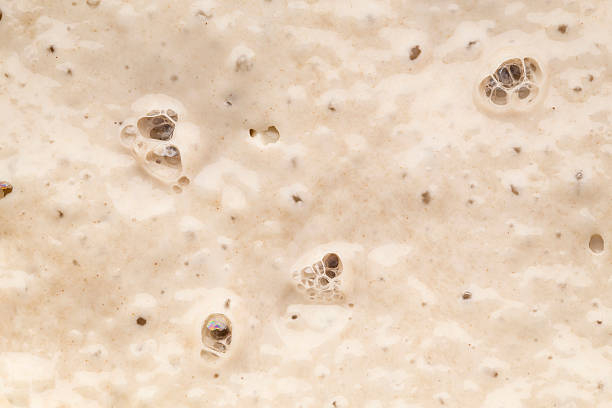
Not using a poolish starter 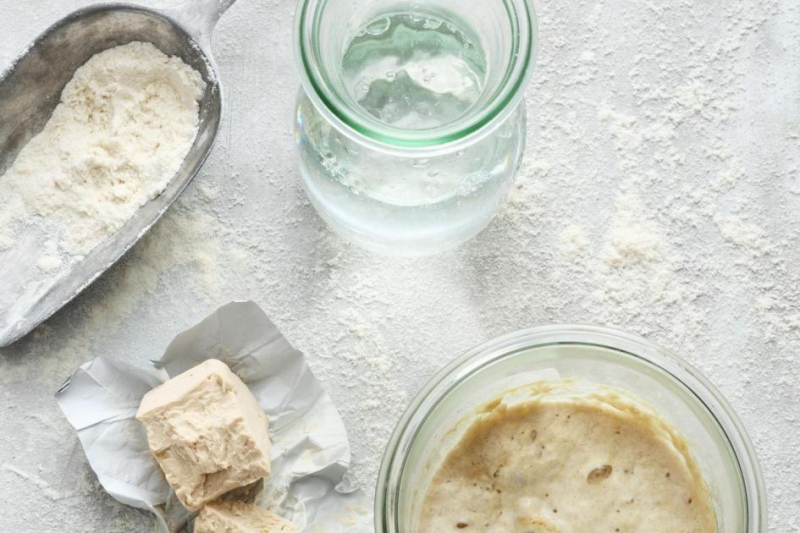
Not using a poolish starter -
If you've worked with cast iron before, you're probably aware of how important it is to have a well-seasoned pan. Working with focaccia is the same, even if you use a nonstick square baking pan. The oil not only crisps the bottom of the focaccia but also prevents anything from sticking to the bottom of the pan when you remove the bread.
You'll need about two tablespoons of oil for a 10-inch skillet or round nonstick cake pan. The exact type of oil used for focaccia corresponds to the smoke point of the oil. Because it has a higher smoke point, avocado oil is a good choice for focaccia. Extra virgin olive oil, for example, is not ideal for working with focaccia because it can quickly burn at the oven temperature required to cook your focaccia.
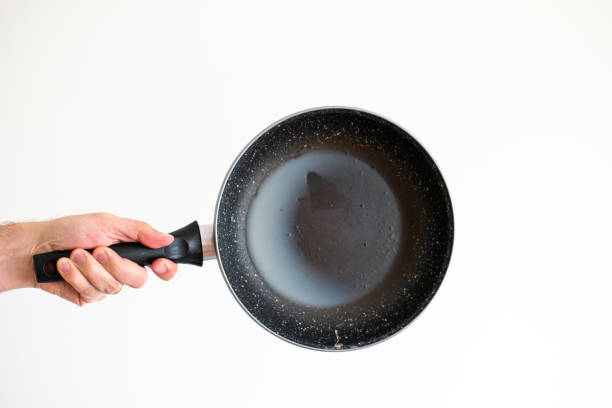
Forgetting to coat the pan with oil before baking 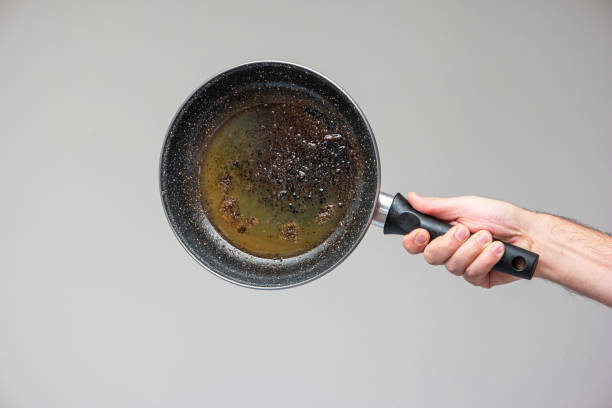
Forgetting to coat the pan with oil before baking -
Sticking your oily fingers into the squishy dough is not only entertaining, but it also serves an important function for the focaccia. Some reports point out that dimpling the dough before baking prevents it from bubbling and burning, much like a pizza crust. If you bake your dough without dimples, the dough will collapse when the bubbles burst, resulting in sad focaccia and a sad baker.
To dimple the dough, lightly oil your fingers or the end of a wooden spoon handle and gently poke it. You don't have to follow a pattern, but try not to crush your fingers all the way to the bottom of the pan to break the dough apart. Another advantage of dimpling your dough, according to Thyme and Envy, is that you will increase the surface area when applying the final coat of olive oil. As a result, dimpled focaccia will have a much better and more consistent color.
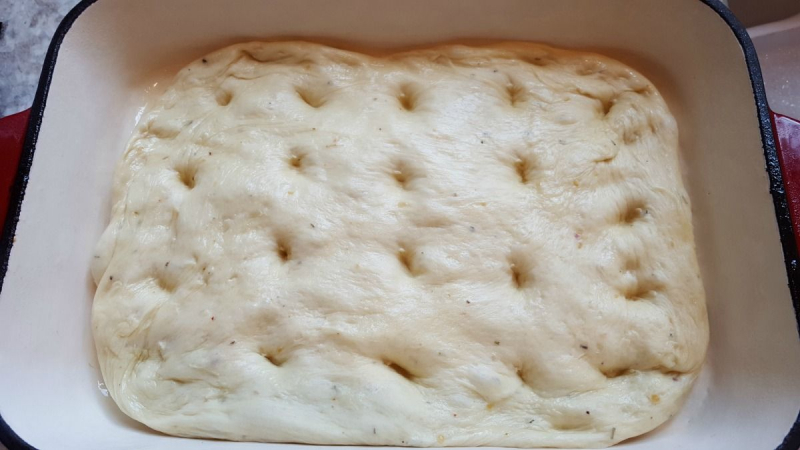
Forgetting to dimple the dough 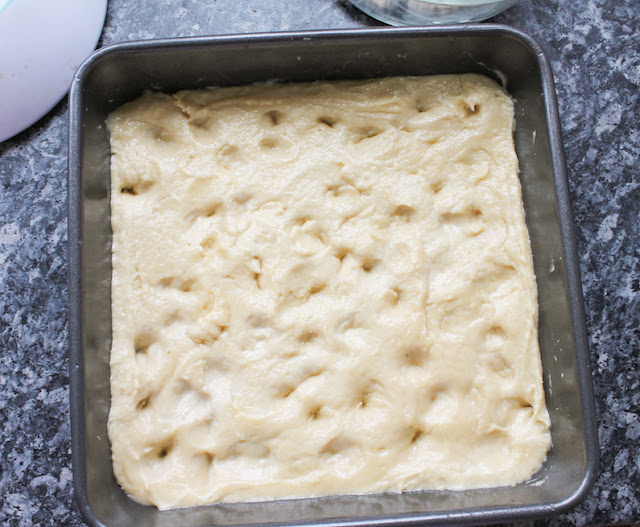
Forgetting to dimple the dough -
The first rising period occurs after the dough has been mixed and the yeast has begun to colonize the flour, and the second occurs after the dough has been dimpled. Depending on the recipe, the second rise for focaccia can take anywhere from 20 minutes to 45 minutes. According to Cooking for My Soul, the second rise of the focaccia is critical for the development of the bread's texture and structure.
The dough will expand to the sides of the pan during the second rise, so you don't have to worry about stretching it out completely when you first fit it into the pan. If you choose a recipe that requires an overnight refrigeration period before the second rise, you may need to relax the dough before shaping it.
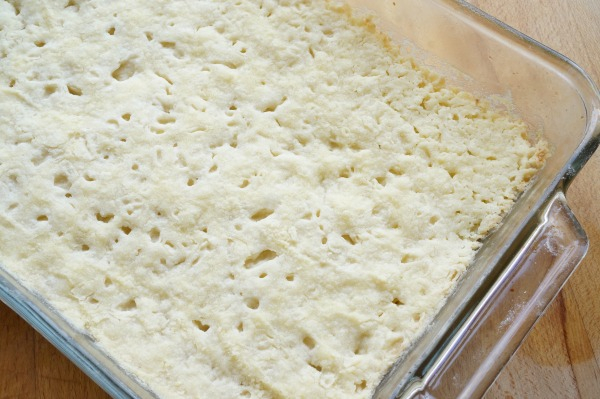
Not letting the dough rise after it's been dimpled 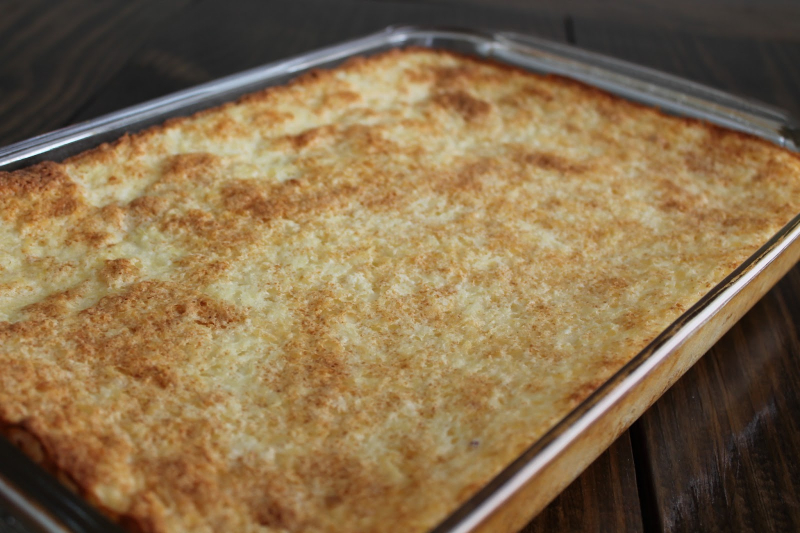
Not letting the dough rise after it's been dimpled -
When it comes to focaccia, you should know that oil is your friend. Can the same be said for the oil that is added after the dough has been dimpled? The quick answer is yes. If you want to achieve the best color, brush a thick layer of oil on top of your focaccia before placing it in the oven. To spread the oil, use a pastry brush or gently swipe your oiled finger across the top of the dough to create an even layer of oil.
Some bakers, according to The Guardian, will make a brine for the top of the focaccia before baking it. The brine, which contains salt, water, and oil, keeps the dough moist in the pan's dimples and grooves. However, for the inexperienced baker, a drizzle of oil and a pinch of salt on top of the focaccia should suffice.
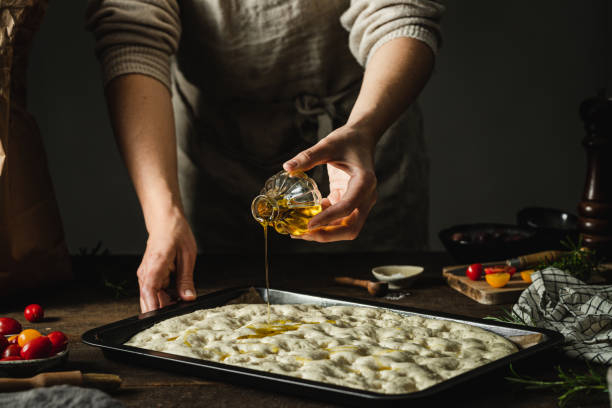
Not adding enough oil to the focaccia before baking 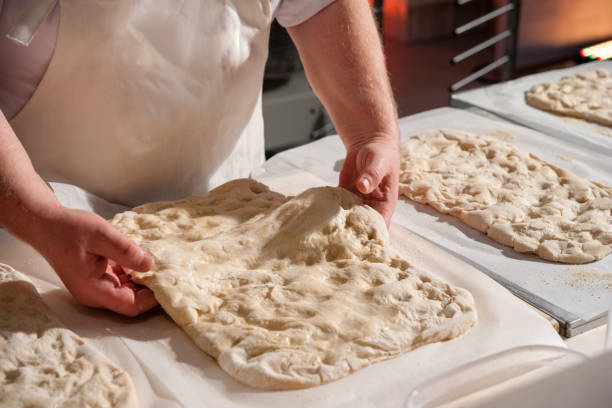
Not adding enough oil to the focaccia before baking -
Focaccia is a blank canvas that can be adorned with fresh herbs, tomatoes, olives, or even watermelon radishes. Because of its aromatic properties, rosemary is a popular topping for focaccia; you can use fresh or dried versions of this herb for your focaccia. For an authentic Italian flavor, bakers also add springs of tarragon, basil leaves, and oregano to focaccia. You could also mince garlic and sprinkle it on top of your bread before it goes into the oven.
If you like cheesy bread, try adding crumbled feta to your focaccia; the flavor goes well with garlic and halved cherry tomatoes. Focaccia artists have been inspired by fruits, vegetables, and herbs. These bakers arrange chopped vegetables to form flowers, landscapes, and other lovely designs.
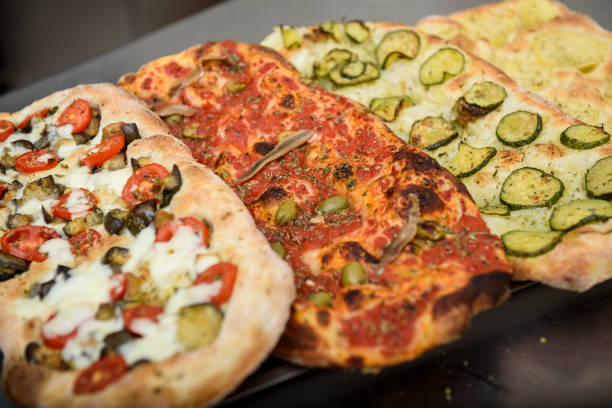
Forgetting to add toppings and spices 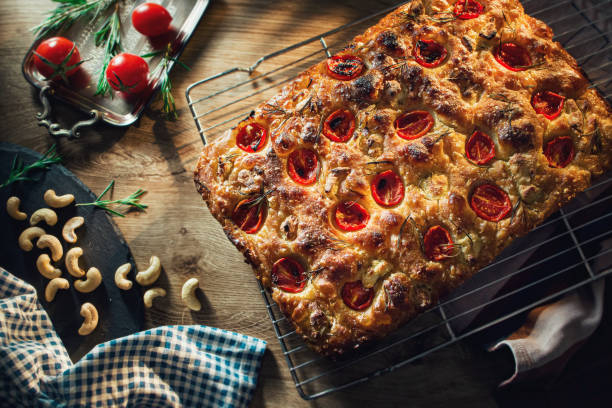
Forgetting to add toppings and spices












